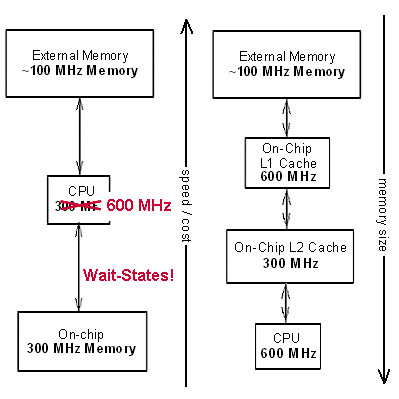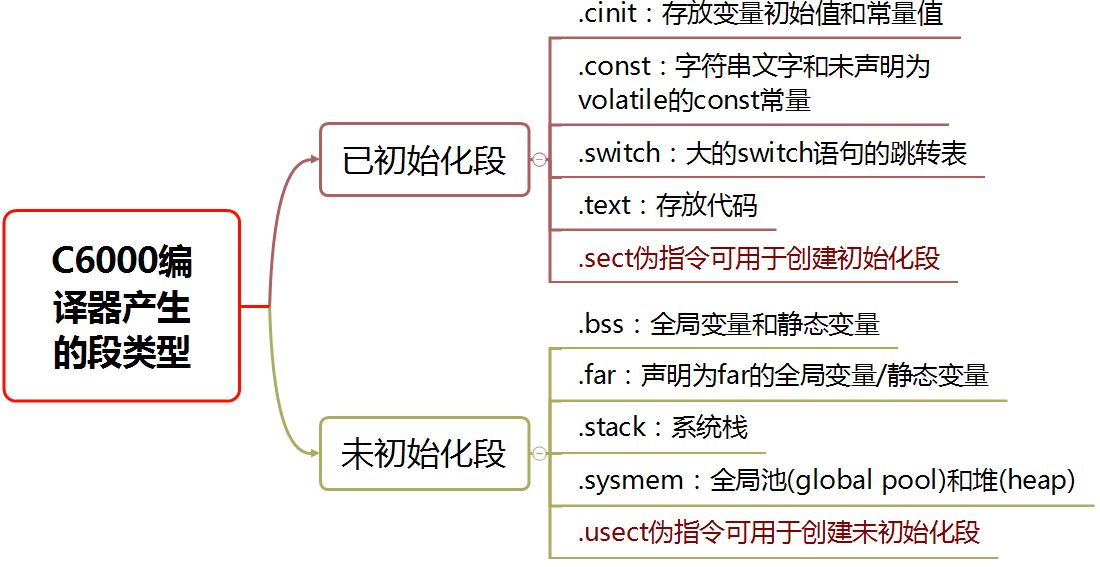|
The OP
Published on 2020-1-2 20:11
Only look at the author
This post is from DSP and ARM Processors
| ||
|
|
||
- 【Posts】Why does TI C6000 need cache?
- 【Posts】TI C6000 DSP McASP port problem
- 【Posts】TI C6000 Teaching Experiment Box Operation Tutorial: 5-8 Histogram Equalization (LCD Display)
- 【Posts】Why does C6000 need Cache?
- 【Posts】TI enters the M0 MCU camp. What is it up to?
- 【Posts】[Analysis of the topic of the college electronic competition]——2022 TI Cup Shanghai C topic "Active two-way audio amplifier circuit"
- 【Posts】A large collection of TI M0 official information, a board online, if you want to review it, please give it a thumbs up
- 【Posts】I took a look at TI's official M0 chip product pictures and found that there are products with Flash ranging from 8KB to 64KB. What applications are they all aimed at?
- 【Download】【TI】OMAP-L138 C6000 DSP+ARM Processor
- 【Download】Introduction: uC/OS-II & lwIP ports for TI C6000 DSP. Very useful!
- 【Download】TI C6000 board support function library is very useful for beginners
- 【Download】Summary of C code optimization for TI DSP c6000 series
- 【Download】The more you control, the more fun it is-TI C2000 LaunchPad development story
- 【Download】2012 TI C2000 and MCU Grand Prix Undergraduate Group_Control System_Xi\'an University of Science and Technology_Intelligent Car Based on MSP430 Series MCU Control.rar
- 【Download】2012 TI C2000 and MCU Grand Prix Intelligent car based on MSP430 series microcontroller control.rar
- 【Download】\"Typical Examples of DSP Embedded Application System Development (C6000)\"
- 【Design】TI launches wireless metering bus M-BUS reference design
- 【Design】ti power adjustable module
- 【Design】XDS110 CMSIS-DAP TI emulator
- 【Design】ti car
- 【Design】TI ultra-low power wireless vibration sensor monitors motor reference design
- 【Design】TI releases space-grade 3-7V input, 24A/0.95V output reference design
- 【Circuits】TI LMZM2360x step-down power module, do you know it?
- 【Circuits】TI TCAN4550 system basic chip analysis
- 【Circuits】Shire YB-5T, YB-5TL, YB-5TI, YR-5M warm water dispenser circuit diagram
- 【Articles】Design and implementation of multicast network based on C6000 DSP NDK
- 【Articles】Research on Flash Secondary Loading Technology of C6000 Series DSP
- 【Articles】Nvidia explains that the RTX 4060 Ti uses 128-bit video memory: the L2 cache is increased by 16 times, which greatly improves the hit rate.
- 【Articles】News says Nvidia GeForce RTX 4060 Ti and RTX 4060 will be launched in May
- 【Articles】TI announces 2021 revenue, with automotive and industrial accounting for more than 60%, and promises to expand production capacity
- 【Articles】Texas Instruments omap4460 Introduction
-
Why does C6000 need Cache?
Large-capacitymemory(suchasDRAM)haslimitedaccessspeed,whichisgenerallymuchslowerthantheCPUclockspeed;small-capacitymemory(suchasSRAM)canprovidefastaccessspeedAsshowninFigure3,theleftandrightsidesareaflatmemoryarchitectureandamulti-layermemo ...
-
Cache miss categories of the C6000 series
Cachemisscategories:Distinguishingthetypesofmissesandthecausesofmissescanhelpyouchooseappropriatemeasurestoreduceoravoidmisses1Thatis,thememorylocationcurrentlyaccessedbytheCPUismappedtothesamesetasthememorylocationjustcachedItispreciselybe ...
-
[Review of "Artificial Intelligence Practical Tutorial"] Python Function
#【《ArtificialIntelligencePracticeTutorial》Evaluation】PythonFunction##FunctionIfablockofcodeisneededmultipletimeswhendevelopingaprogram,butinordertoimprovetheefficiencyofwritingandthereuseofcode,thecodeblockswithindependentfunctionsareor ...
- Help! My newly bought power bank is broken!
- I have a question about the network port circuit?
- Work and classes are suspended, but learning continues! Rohm R Classroom is officially launched online
- RF Technology - The Key to Next-Generation WLAN
- How to design the switching power supply input filter circuit?
- 【BLE 5.3 wireless MCU CH582】6. PWM breathing light
- In these years in the forum
EEWorld Datasheet Technical Support
-
"Cross-chip" quantum entanglement helps build more powerful quantum computing capabilities
IBM scientists have achieved "cross-chip" quantum entanglement - successfully entangled two "Eagl
-
Ultrasound patch can continuously and noninvasively monitor blood pressure
A research team at the University of California, San Diego, has developed an innovative wearable
-
Europe's three largest chip giants re-examine their supply chains
At the Electronica 2024 CEO Roundtable held just last week, the CEOs of three chip giants, Infine
- It is reported that Kioxia will be approved for listing as early as tomorrow, and its market value is expected to reach 750 billion yen
- The US government finalizes a $1.5 billion CHIPS Act subsidy to GlobalFoundries to support the latter's expansion of production capacity in the US
- SK Hynix announces mass production of the world's highest 321-layer 1Tb TLC 4D NAND flash memory, plans to ship it in the first half of 2025
- UWB is a new way to use it in cars. Can wireless BMS also use it?
- Filling the domestic gap! China Mobile, Huawei and others jointly released the first GSE DPU chip
- Samsung Electronics NRD-K Semiconductor R&D Complex to import ASML High NA EUV lithography equipment
- Apple reveals the secret of its own chip success: competitors can't use the latest cutting-edge technology
- Problems with STM32 and passive buzzer playing sound
- Embedded Tutorial_DSP Technology_DSP Experiment Box Operation Tutorial: 2-28 Building a Lightweight WEB Server Experiment
- OPA847IDBVR op amp domestic replacement
- AG32VF407 Test UART
- [Digi-Key Follow Me Issue 2] Chapter 1: Sharing on receiving the goods
- What model is this infrared receiver? Which model can be used instead? Thank you
- Selling brand new unopened ZYNQ 7Z020 FPGA core board
- The LORA module used in the lithium battery-powered water meter setting can save energy when 100 water meters are installed in one corridor.
- I would like to ask, when a port is set to RX0, is it necessary to set the input and output direction of this port?
- Why is this year so difficult? It’s even more difficult than during the pandemic. I’m 30 and facing unemployment. I’m so confused.
- Ask about the voltage regulator test question
- [Xiaohua HC32F448 Review] About Xiaohua Semiconductor's UART interrupt sending and PRINTF construction and redirection
- 【BIGTREETECH PI development board】 HDMI output test
- 【BIGTREETECH PI development board】+08. Audio test (zmj)
- [Xiaohua HC32F448 Review] +RTC electronic clock
- 有奖直播报名| 高可靠性IGBT新选择 —— 安世半导体650V IGBT
- 【直播时间】12月19日(周四)下午15:00-16:30
【直播好礼】定制双肩商务包、30元京东卡、吸管玻璃杯
- 安世半导体直播报名中
- 直播主题:安世半导体理想二极管与负载开关,保障物联网应用的稳健高效运行
直播时间:12月17日(周二)下午14:00
报名就有机会获得:定制双肩商务包、30元京东卡、吸管玻璃杯
- PI 电源小课堂 | 无 DC-DC 变换实现多路高精度输出反激电源
- 时间:即日起-12月15日
看视频学习电源干货,答题赢取京东卡!
- 参会有好礼 | 2024 瑞萨电子MCU/MPU工业技术研讨会
- 深圳站:11月30日(周六)深圳湾万怡酒店
上海站:12月06日(周五)上海喜玛拉雅酒店
奖励设置:现金红包、螺丝刀套装或30元京东卡
- Littelfuse 新品赋能电子产品安全可靠并高效, 10+挑战等你探索!
- Littelfuse 应用赋能星球,覆盖了诸多应用痛点及解决办法,邀请工程师一起探索,解锁更多设计力!
- 下载资料赢好礼!看Vicor模块化电源解决方案如何推动创新
- 活动时间:即日起-2024年12月31日
如何参与:点击活动页内您想了解的模块,找到资料下载即可参与抽奖,活动结束后统一发奖!
- 有奖活动|英飞凌高密度双相电源模块为高性能运算平台而生
- 活动时间:即日起-12月15日
活动奖励:蓝牙音箱、氮化镓充电器套装、黑色小背包
- 本周精选下载推荐:电源管理基础Dummies
- 本周小编给大家带来一本超简单、超干货的电子书——《电源管理基础Dummies》!内容深入浅出,排版舒服简洁,分分钟能get到电源管理最核心的知识内容。
EEWorld
subscription
account

EEWorld
service
account

Automotive
development
circle

About Us Customer Service Contact Information Datasheet Sitemap LatestNews
- How to get started with 32 MCU programming? Please give me a learning outline
- For the introduction to PCB board repair, please give a learning outline
- For the introduction of PCB drawing, please give a learning outline
- For an introduction to machine learning modeling, please give a study outline
- For an introduction to deep convolutional neural networks, please give a learning outline
- How long does it take to get started with single chip microcomputer PLC
- What board should I buy when I am just getting started with FPGA?
- Which company is Claude from?
- What happened to A-share listed companies related to RISC-V?
- What does Arduino programming language mean?


 Room 1530, Zhongguancun MOOC Times Building,
Block B, 18 Zhongguancun Street, Haidian District,
Beijing 100190, China
Tel:(010)82350740
Postcode:100190
Room 1530, Zhongguancun MOOC Times Building,
Block B, 18 Zhongguancun Street, Haidian District,
Beijing 100190, China
Tel:(010)82350740
Postcode:100190
 京公网安备 11010802033920号
京公网安备 11010802033920号






 提升卡
提升卡 变色卡
变色卡 千斤顶
千斤顶